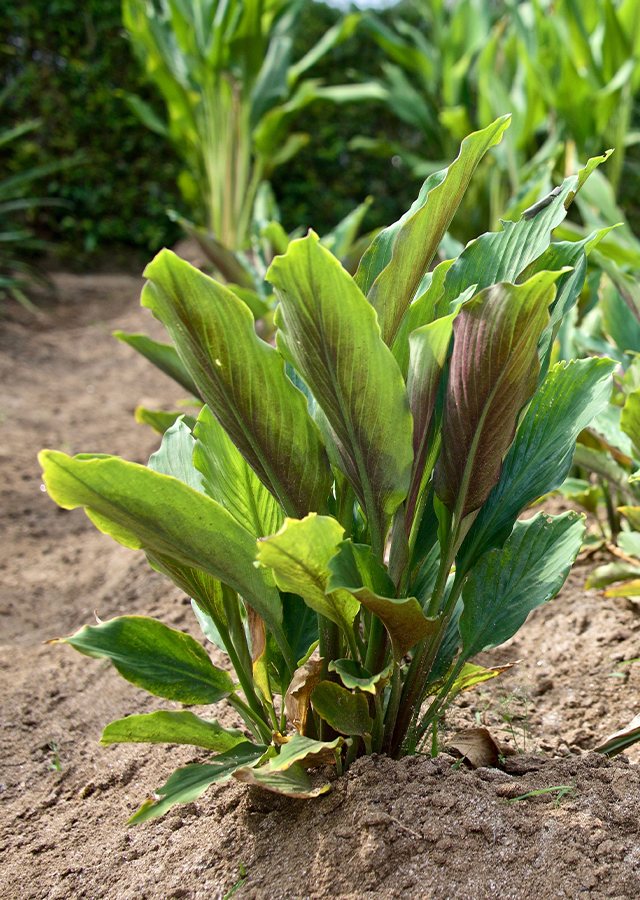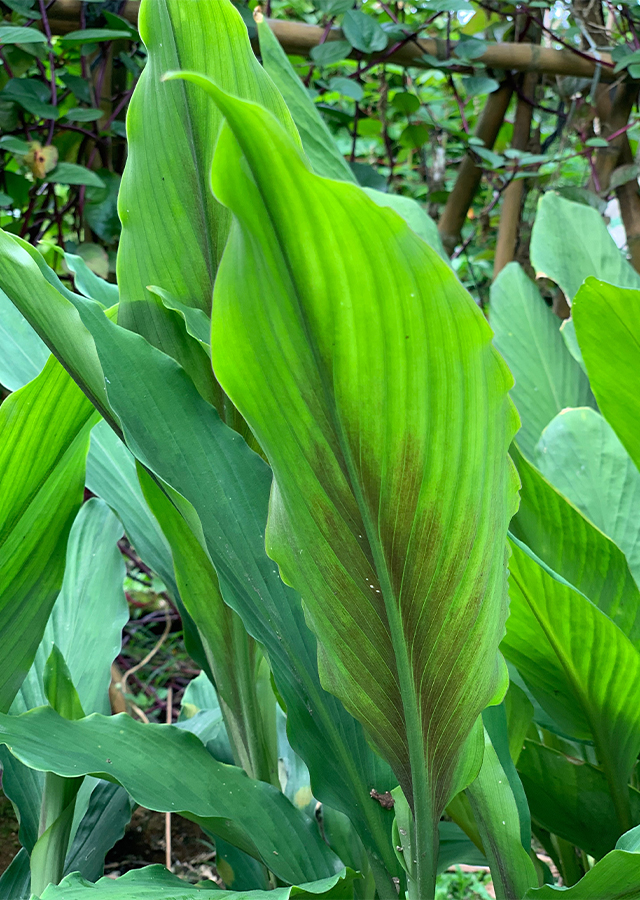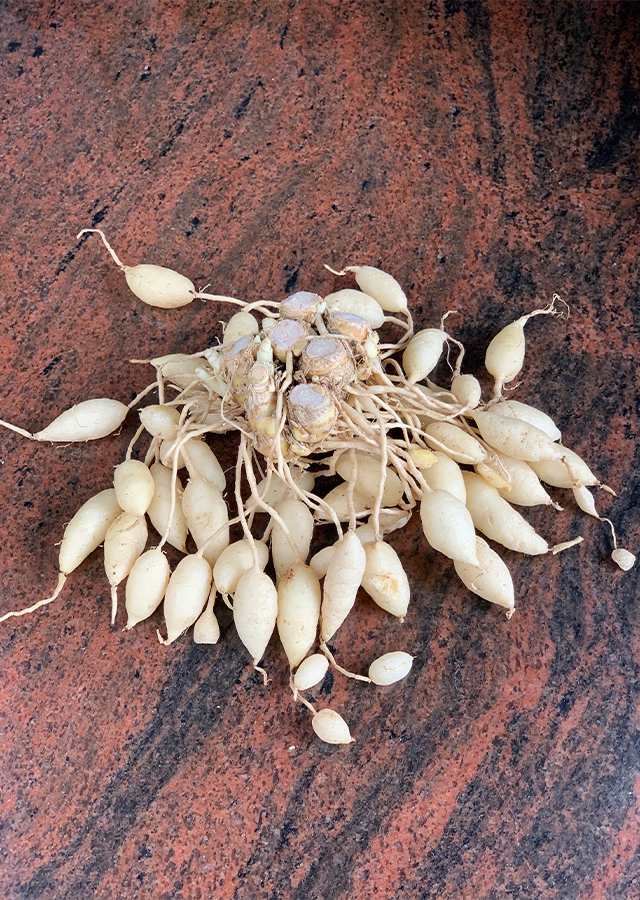Round-rooted Galanga
Kaempferia rotunda L.
Zingiberaceae
Location in our garden
Principal



Synonym
Kaempferia longa Jacq.
Kaempferia versicolor Salisb.
Zerumbet zeylanica Garsault
Habitus
Herbaceous. A small rhizomatous stemless herb to 65 cm high
Part Used
Leaves
Rhizome
Growing Requirements
Need Shade
Habitat
Forest
Overview
This plant is indigenous to Indian subcontinent, through Southeast Asia to Southern China. It is cultivated in China (Guangdong, Guangxi, Hainan, Yunnan), Taiwan, India, Indonesia, Malaysia, Myanmar, Sri Lanka, Vietnam and Thailand.
Vernacular Names
Kunci pepet (Malaysia), Gisol na bilóg (Tagalog-Philippines), Ueang din (Thailand), Cẩm dịa La (Vietnamese), Bhuichampa (Bangladesh), Hai nan san qi (Chinese), Runde gewurzlilie (German), Bhuchampaca (Sanskrit), Temu pepet (Indonesia), Kunir putih (Javanese), Temu rapet (Eastern Sumatra).
Agroecology
In its native range, it occurs under partial shade, in open lower montane forests, forest margins and bamboo forest and open grasslands from sea level to 1.300 m asl. It grows on all types of soil. Grows best in a moist, well-drained, fertile, humus-rich soil.
Morphology
- Roots - small tuberous
- Rhizomes - fleshy, short, yellowish-white tubers which is 1.15 cm long and 1.2.5 cm thick, robust subterranean bearing slender, cylindrical roots terminating in swollen, subglobose, ovate or spindle-shape.
- Leaves - erect, distichous, short-petiolate sheaths which are 7–25 cm long, with lamina which is oblong lanceolate to elliptical and 7–36 cm long.
- Inflorescence - emerges on separate shoot from the rhizome before the leaves, with 4–6 flowers, fragrance, purple-brown bracts and 2-toothed bracteole apex. Calyx - 4–7 cm and splits on 1 side, with 3-toothed white or greenish apex. Labellum - violet, obcordate and apically 2 cleft to base.
Cultivation
Propagated using fragments of the rhizomes.
Chemical Constituents
Alkaloids, saponins, flavonoids, triterpenoids, polifenol, chalcones, quercetin, protocatechuic acid, syringic acid, benzoic acid. β-sitosterol, stigmasterol, steroids, champor, borneol, sineol and metil chavikol.
Traditional Medicinal Uses
- Rhizomes are used as diuretic.
- Studies have suggested antioxidant, antibacterial, antifungal, anthelmintic, anticancer, antimutagenic, analgesic, anti-inflammatory, antihyperglycemic, anti diabetes, atherosclerosis properties.
- Rhizomes use internally for gastric complaints, used with coconut oil as a cicatrizant, used in mumps for bruises and wounds.
- Ointment made from the powder of the rhizomes is used for healing wounds.
- Juice of rhizomes is used as resolvent of phlegm, of dropsical afflictions of the hands and feet, and for joint effusions.
- In India, powdered roots is used for mumps; as poultice, used for suppurations.
- In Bangladesh, it is used for treatment of diabetes and pain.
- In Indonesia, it is used for abdominal pain, wounds, diarrhea, colic disorder, sputum loosening.
- The rhizome is ground into a paste and applied externally for the treatment of sprain.

